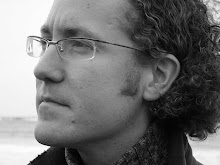[continued from previous post]
As for the conference it was hit and miss. There seemed to be a large emphasis on neuroscience and psychophysical methods. There is nothing wrong with these methods, in fact they are very powerful ways of investigating visual phenomenon in very precise ways, but they are not the only methods for investigating visual perception. Quite a few people commented to me after the first couple of days that they were a bit disappointed with the lack of higher-order perception studies and applied cognition. As it turned out these types of studies were reserved for the last couple of days and there were quite a number of interesting posters that made up for my general feeling of “intellectual drowning” during most of the seminars.
Before the start of the conference there was a pre-symposium entitled Art and the Visual System. This was really interesting and was exactly the approach I have been trying to take during my PhD: applying scientific theories and methods to the analysis of visual art. There were a number of really interesting presentations including explanations of the Watercolour illusion (Baingio Pinna), Picasso’s cubism via visual crowding (Denis Pelli), and Mona Lisa’s ambiguous smile via peripheral vision (Margaret Livingstone). Very clever stuff. The presentation I found most interesting was Semir Zeki’s (University College London) discussion of the chronoarchitecture of the brain and its relationship to sensory experience. As an example of his ideas he showed an animation of real-time brain activation whilst watching a clip from the James Bond movie Goldeneye. Brilliant stuff. Although I have to acknowledge Uri Hasson (NYU) who has previously presented similar results of neural synchrony between viewers when watching a feature film (his Science paper can be found here). Hasson presented further evidence of this synchrony at ECVP (abstract). He showed that neural activation was mostly the same if a silent film was viewed forwards or backwards with only a couple of regions showing different activation: the intraparietal sulcus (IPS) when the films depicted non-continuous shots of motion and Wernicke’s area when the shots were semantically related (i.e. the films had a plot).
There were a couple of other relevant presentations at ECVP (such as Kazuya Kito’s eye tracking study of Coca-Cola adverts….sweet industrial sponsorship) but the most relevant was Kiyoshige Suzuki’s presentation of ‘The perceptual organisation with serially presented motion picture shots’…..sound familiar? I couldn’t believe the similarity between his study and my own when I first saw it. He even used stimuli that depicted a ball moving laterally across the screen, exiting the screen, and then reappearing on the opposite edge after a cut! His mode of assessment was primarily introspective and he drew conclusions about viewer’s perception of continuity of object identity and motion across the cut where as I was using indirect methods to find evidence for the same effects (you can see my abstract here). Suzuki has presented work at ECVP twice before, one poster was an empirical reproduction of the Kuleshov experiment (2002) and the other was an earlier investigation into continuity across cuts (2004). The fact that we have both been investigating the same questions was a great shock to both of us. Suzuki seemed to get a lot out of my poster when I presented it on the Friday and we spent a lot of time together discussing our methodologies and research interests. I’m sure Suzuki will prove to be a great colleague and I hope we can stay in touch to exchange ideas and keep each other motivated about this area of research.
During Suzuki’s poster session I also had the good fortune to meet Rosanna Actis-Grosso. Rosanna, in conjunction with Luca Tommasi presented two studies investigating the perception of temporal continuity across cuts at ECVP in 1998 and 1999. Their 1998 poster (sorry, can’t find a link) showed that perception of temporal continuity across a magnification cut during a Michottean Launching event was effected by the degree of magnification. This experiment is the first empirical evidence I know of that shows how a temporally discontinuous edit can be made to appear continuous. My Watched Pot / Stopped Clock experiment owes a lot to this experiment. Their 1999 poster showed that this perception of temporal continuity is effected by the relocation and the resulting apparent motion of the main object on the screen across the cut. This conclusion supported my ideas about the effects of saccadic eye movements on continuity perception across edits. Rosanna made some very interesting comments about the poster I presented at ECVP and it is great to see that her interests still lie in this area even if she hasn’t followed up her two innovative studies.
In general ECVP was a very satisfying experience and I am very glad I went. The people I met, both socially and in an intellectual context really made the conference worthwhile and I look forward to staying in contact with as many of them as possible. Thanks again everyone and I hope to see you at future ECVPs or other visual perception conferences.




No comments:
Post a Comment